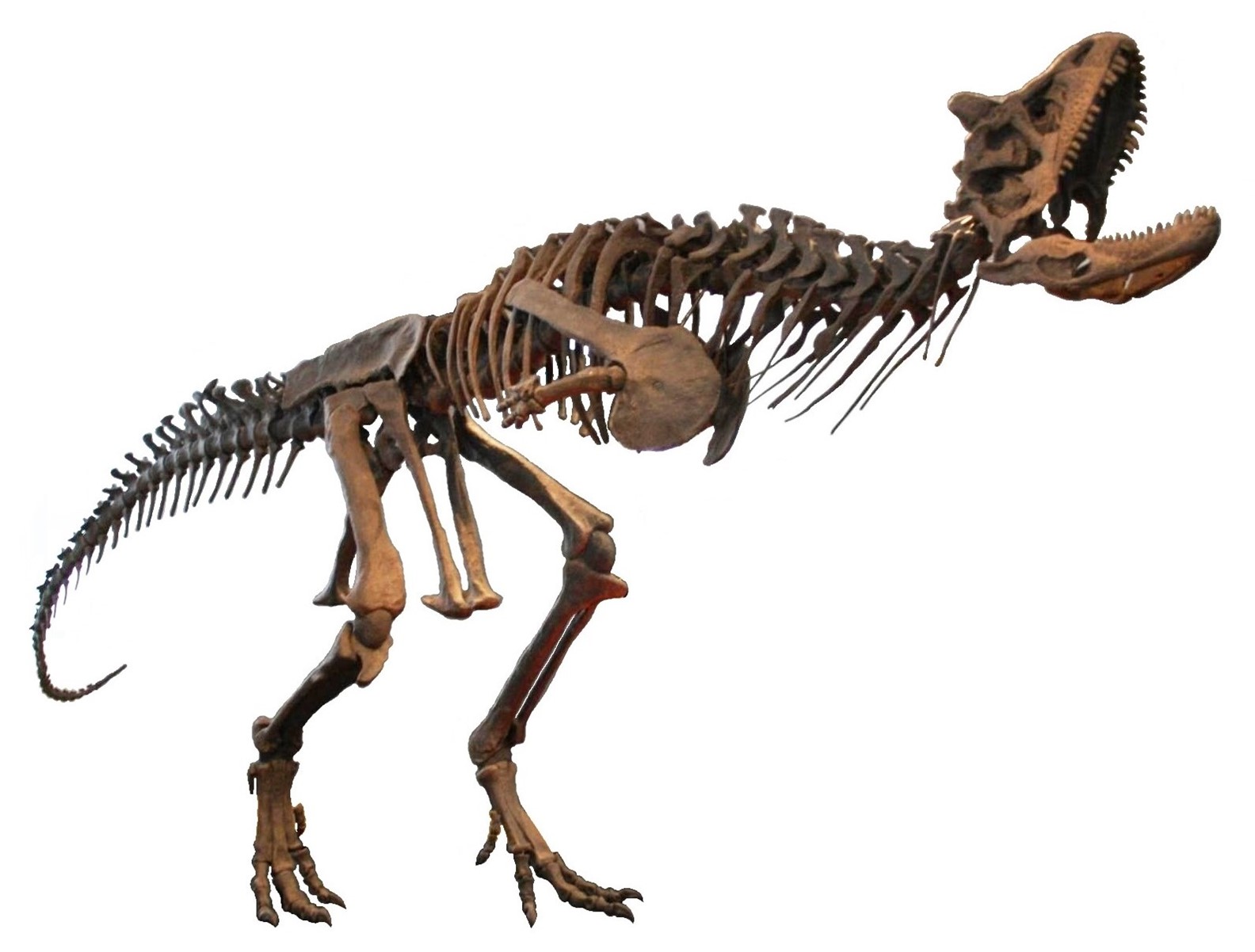
Credit: User Marco on Flickr, CC BY 2.0, via Wikimedia Commons
Dinosaurs, like most large animals today, had long lives. Therapods like T. rex lived to about 30 years, while giant sauropods could live to 60.
And over those long lifespans, like all of us, they got sick. Soft tissues don’t fossilize as well as bone, but scientists have documented diseases, from the mundane to the mortal, in all types of dinosaurs.
Feathered dinosaurs had dandruff. Others showed, through preserved skin fragments, dermatitis or sores from healing wounds.;
Some dino joints exhibited inflammation and malformation, likely the product of years of achy arthritis. Others contained uric acid crystals similar to gout today.
A Diplodocus showed evidence of an upper respiratory infection that could have spanned its entire long neck—that’s a lot of sniffles!
Others showed illnesses in their jaws and throats similar to those in modern raptors.
Paleontologists have found telltale signs of bone infection causing changes in bone growth, size and density. And aggressive bone cancers that could have spread to other parts of the body.
They even suspect that dinosaurs had an early version of malaria, transmitted by a now-extinct insect.
Most dino diseases have gone extinct, too, though many are still around. But don’t worry about catching them. Since crocodiles and birds are more closely related to dinosaurs, they’re the ones who are more susceptible.
Background
Synopsis: Like all animals, dinosaurs got sick. Prehistoric beasts were plagued by a variety of diseases as long as 245 million years ago. From annoying dandruff in their feathers to respiratory illnesses that made them feel crummy to fatal cancers, evidence can be found in their fossilized bones.
- Growth rings in their bones show us that dinosaurs lived for decades, and just like other animals, as they aged, diseases set in.
- Compared to modern giants like bowhead whales that live for up to 200 years, dinosaurs had shorter lifespans, probably because of their more rapid metabolic rates (ED-314 Dinosaurs Run Hot and Cold).
- Giant sauropods lived for as many as 60 years.
- Tyrannosaurus rex lived to the ripe old age of 30.
- A birdlike fossil called Stenonychosaurus grew up to 8 ft (2.5 m) long and weighed around 100 lbs (45 kg), but it only lived about 5 years.
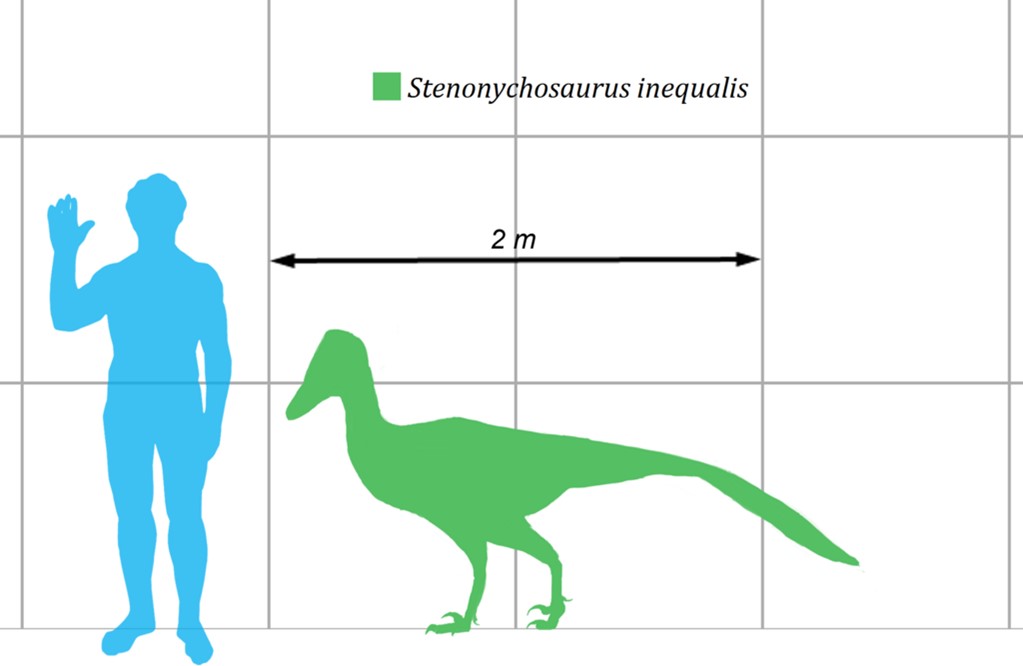
This diagram compares the maniraptoran theropod Stenonychosaurus inequalis (formerly known as Troodon inequalis) with a human. These running raptors were probably night stalkers who grew to adulthood in 5 years and died from old age soon thereafter.
Credit: Matt Martyniuk, CC BY 3.0, via Wikimedia Commons - Most dinosaur fossils are from dinosaurs that had not yet reached adulthood and so were too young to suffer from age-related illnesses.
- While dinosaurs may have had many diseases that attacked their soft tissues, in most cases paleontologists can only study diseases that were severe enough to impact fossilized bones. Bone injuries, arthritis, cancers, gout and abnormal bone growth have been documented in dinosaur fossils.
- A hadrosaur from New Jersey was afflicted with septic arthritis in its elbow that looked like cauliflower. This malady arises from microbial infection of a joint after injury.
- Sue was a Tyrannosaurus rex who died at about 28 years of age of unknown causes, but she suffered from a number of maladies.
- She had recovered from three broken ribs, a torn tendon and a damaged shoulder blade.
- Her left shinbone, the fibula, was twice the size of her right one, and showed indications of the bone infection known as osteomyelitis, which had also infected two of her vertebrae.
- Sue had lesions on her right forearm that look like those found in raptors, reptiles and humans with gout, caused when uric acid erodes bone tissue and deposits excruciatingly sharp crystals in joints due to dehydration or consumption of meat-rich diets.
- While they were originally thought to have been bite wounds, erosive lesions on the jaw bones of several T. rex fossils, including Sue, have now been attributed to a parasitic infection known as Trichomonas gallinae that afflicts modern raptors, killing them through starvation from swelling in the neck.
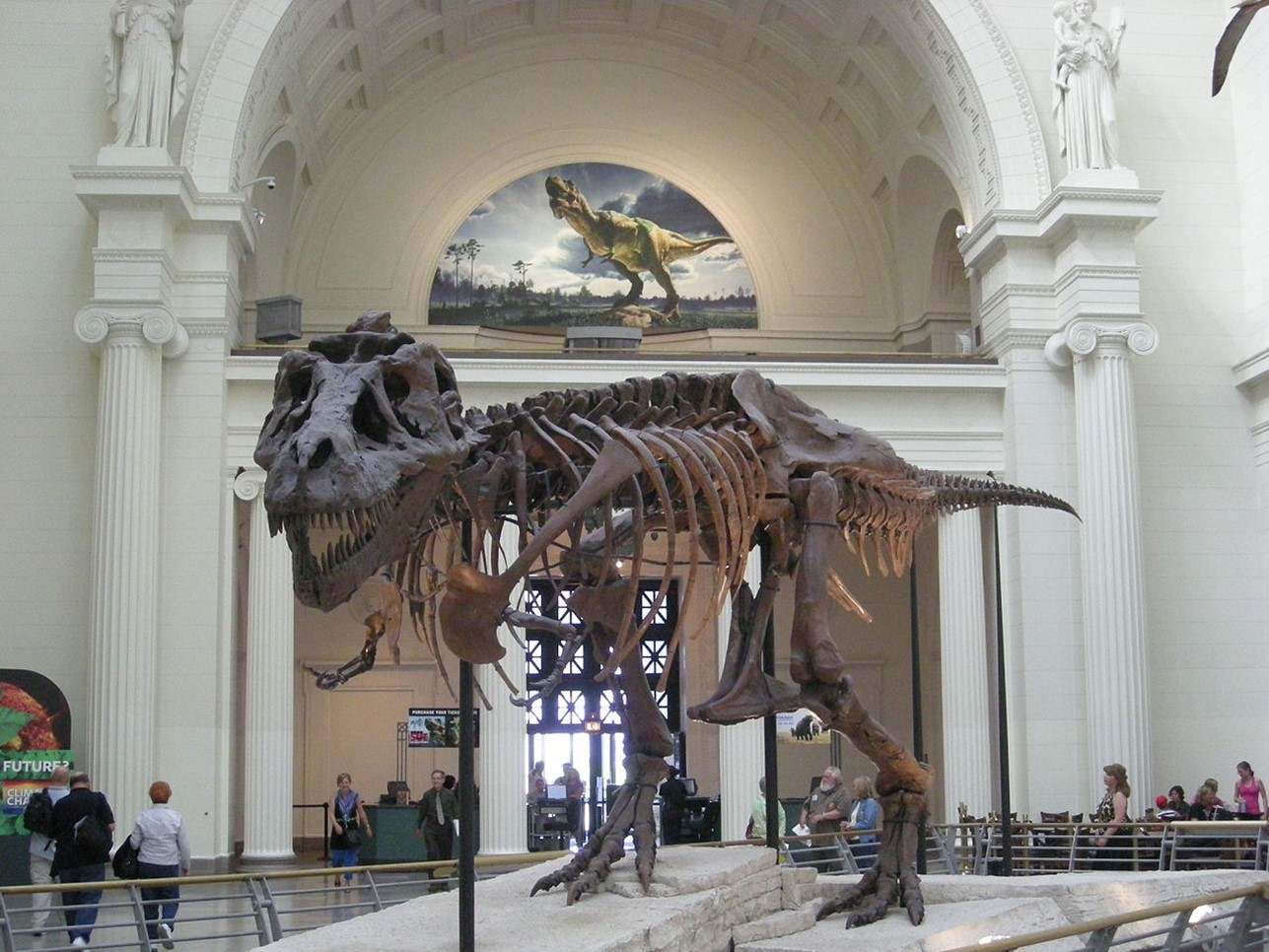
It was a tough life for Sue, a T. rex who died of unknown causes at the age of 28 with injuries, bone infections, parasitic infections and gout. The Field Museum of Chicago paid more than $8 million to buy and install the famous fossil.
Credit: Michael Barera, CC BY-SA 4.0, via Wikimedia Commons
- The evidence of cancer often disappears as the soft tissues of an organism decay, but occasionally, bone cancers have left their mark on dinosaurs.
- Bone cancers have been found as far back as 240 million years ago in a Triassic stem-turtle.
- In 2020, Canadian paleontologists worked with modern pathologists to identify an aggressive bone cancer (osteosarcoma) in the lower leg bone (shin, fibula) of a plant-eating Centrosaurus apertus.
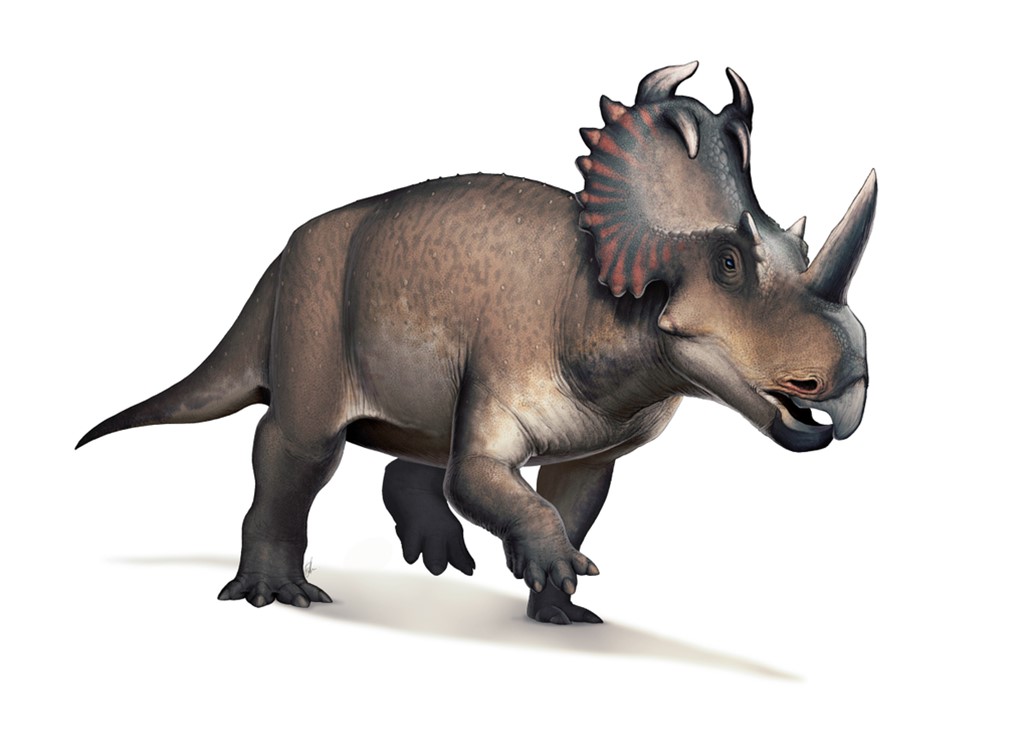
Centrosaurus apertus was a cousin of Triceratops found with evidence of bone cancer in its shin. Its herd was killed in a flood about 77 million years ago.
Credit: Fred Wierum, CC BY-SA 4.0, via Wikimedia Commons - A 70 million-year-old duckbilled hadrosaur (Bonapartesaurus rionegrensis) from Patagonia, Argentina was found to have an osteosarcoma on its toe.
- Many respiratory illnesses also left their mark on dinosaur skeletons.
- The oldest evidence of disease was a tuberculosis-type infection found in a mid-Triassic marine reptile fossil that was 245 million years old.
- About 150 million years ago, a Diplodocus sauropod we know as Dolly came down with a case of the sniffles, and with her long neck, it was a doozy.
- She was about 20 years old and 60 ft long (18 m) when she died.
- Her remains were found in the Jurassic Morrison Formation in southwest Montana.
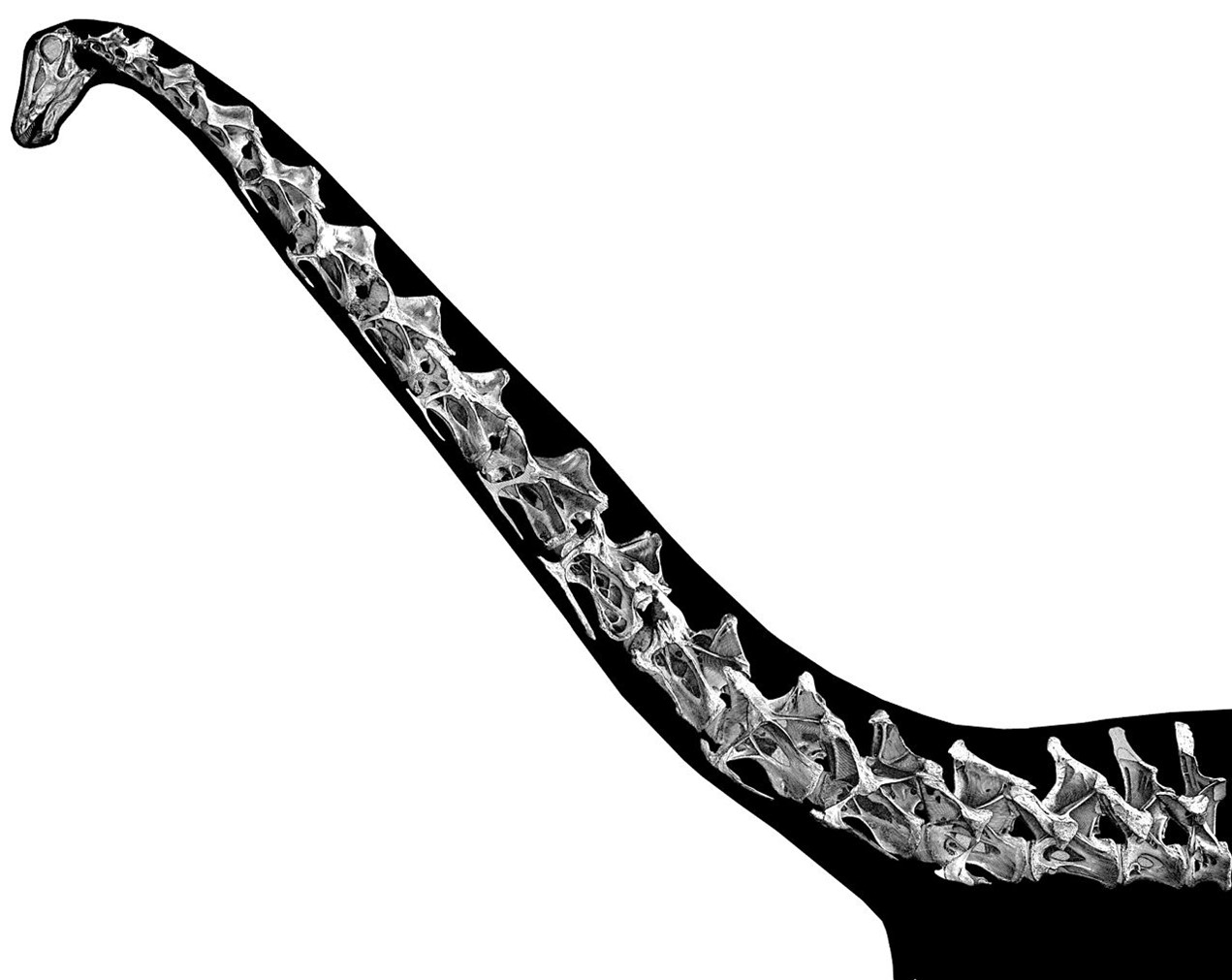
Side-view skeleton with bones and silhouette of a raised Diplodocus neck, similar to Dolly’s, with room in the neck vertebrae for respiratory air sacs.
Credit: John Bell Hatcher and Mike P. Taylor, public domain, via Wikimedia Commons - Unusual bony protrusions extend from Dolly’s fifth through seventh vertebrae into what would have been air sacs within the vertebrae that served to both lighten her neck and regulate her body temperature.
- These projections are thought to have grown in response to an air sac infection and would have caused fever, cough and labored breathing.
- Researchers suspect that the infection was similar to aspergillosis, a mold-related illness that can be fatal to birds. It caused the deaths of more than 2,000 mallard ducks in Idaho in 2006.
- In rare cases, fossilized impressions of skin can provide a window into skin diseases.
- A 2015 paper documents impressions of dermatitis-like skin lesions on the skin surface of a 75 million-year-old Gryposaurus that must have been pretty itchy.
- A 125 million-year-old Microraptor that was about the size of a crow was found with corneocytes typical of human dandruff at the base of the feathers. Subsequently, two other species about twice that size were found to have the same affliction.
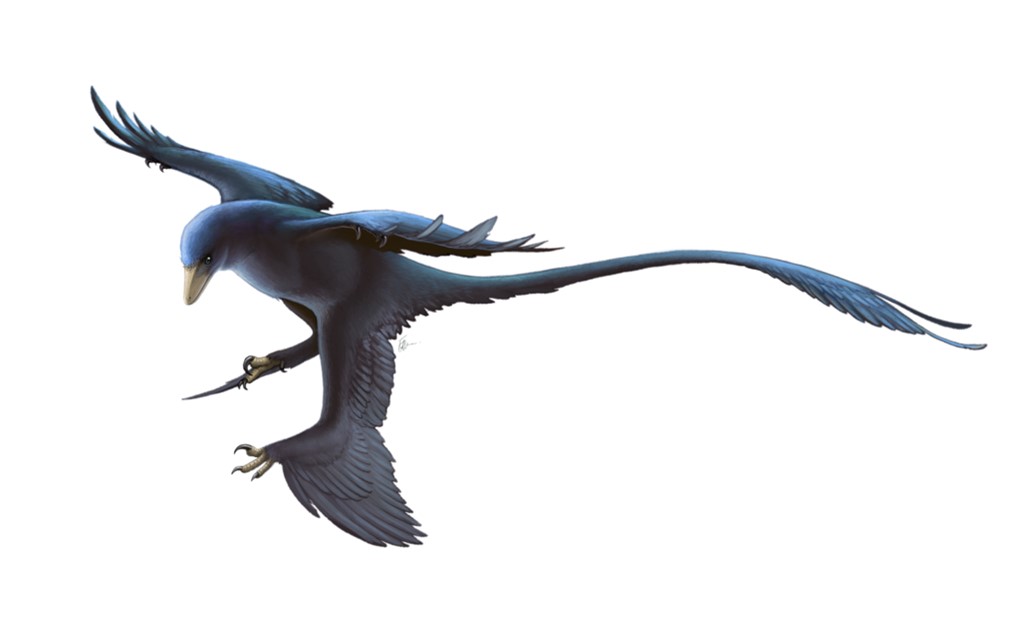
A crow-sized Microraptor like this one had skin cells called corneocytes that are similar to the cells that cause dandruff in humans.
Credit: Fred Wierum, CC BY-SA 4.0, via Wikimedia Commons
- Some researchers think dinosaurs may have also suffered from an early form of malaria, transmitted by a midge that is now extinct.
- Parasitic worms like tapeworms as long as 100 ft (30 m) may have infested the intestines of dinosaurs. Tapeworms can grow to 80 ft (24 m) in human intestines.
- While many of the pathogens responsible for dinosaur diseases are still around, it is possible that some of these disappeared when their hosts became extinct 66 million years ago (ED-096 Real-World Apocalypse).
- Because dinosaurs are more closely related to crocodiles and birds, their diseases may be more similar than the human afflictions we have documented.
- Dino diseases are studied by paleopathologists, who coordinate with veterinarians and a range of modern human medical specialists. In some cases, they even connect via social media.

